
Hello steemians and travellers!
Welcome to the 27th edition of Kim's Quest! This is the third part of my first major climb which was in Mt. Kalatungan (5th Highest Mountain in the Philippines) traverse Mt. Lumpanag (Mt. Wiji or Macaopao Peak). I hope that you will join with me as I relive the experience of that very memorable climb.
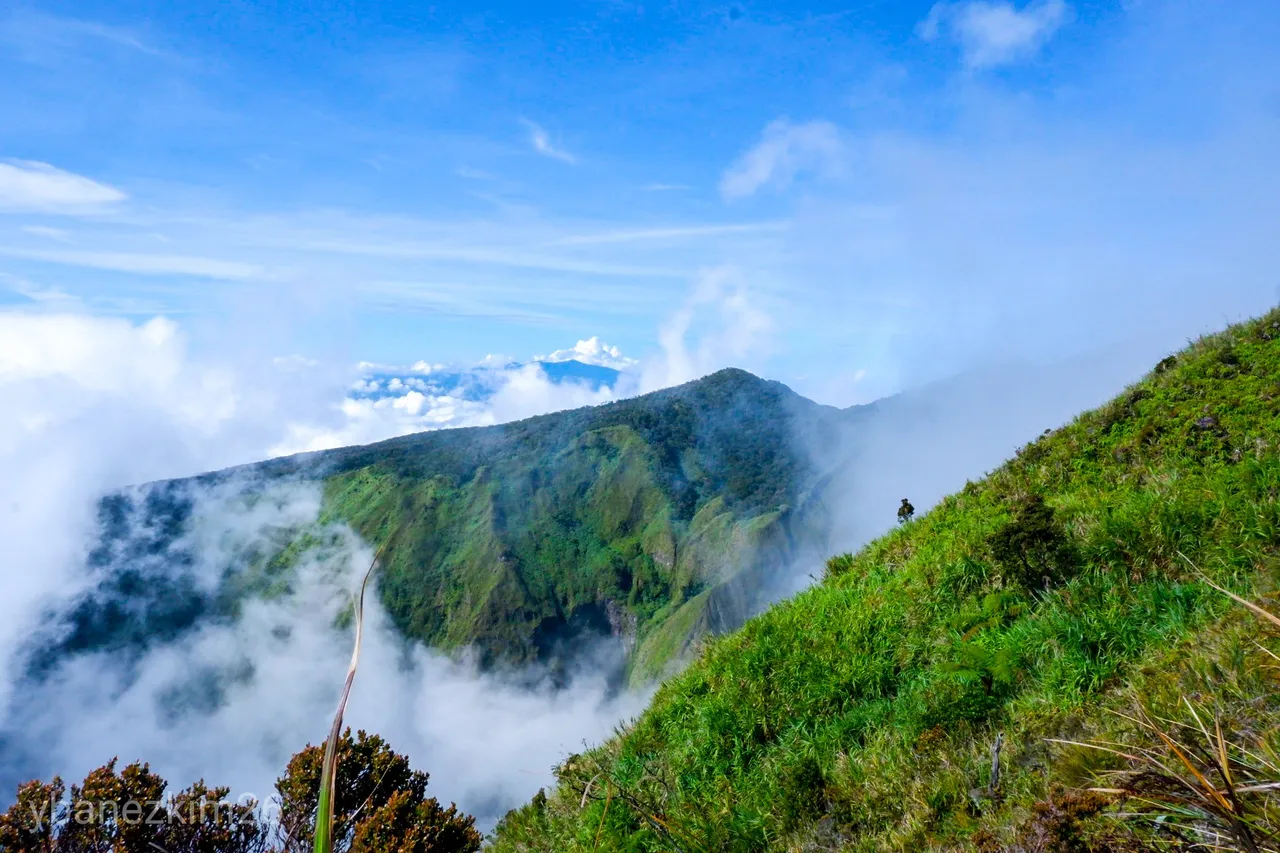
You need to read the first and second part of this series if you want to know when and where it all began. Let me refresh it here:
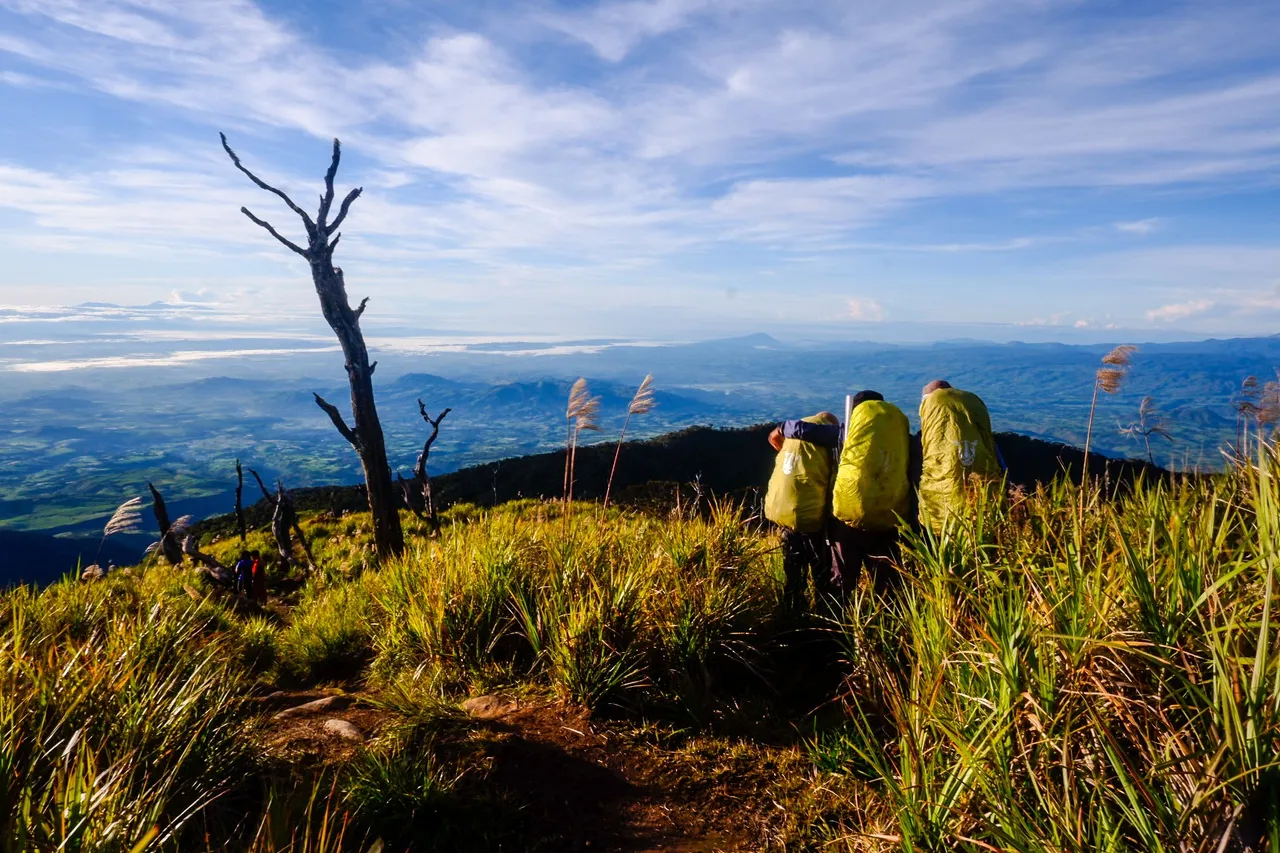
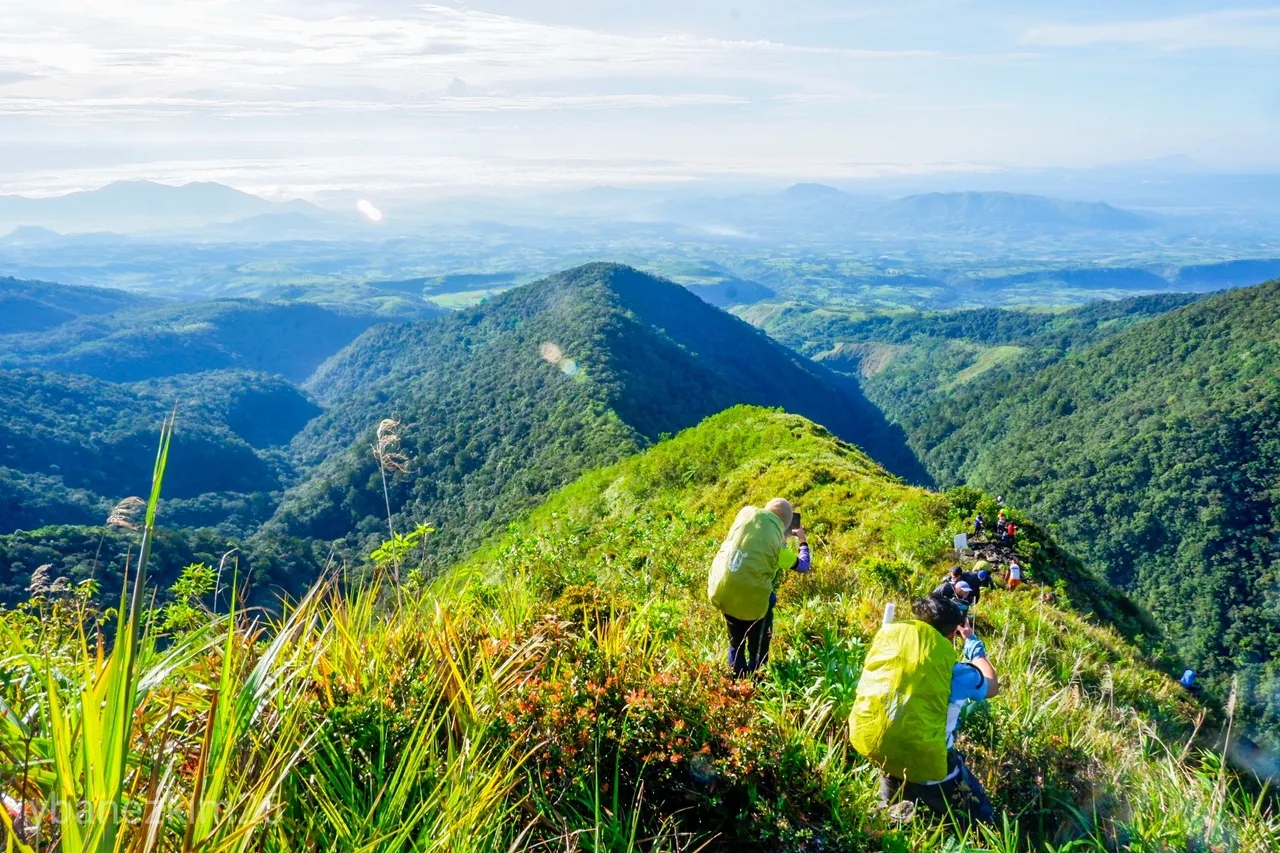
Okay. Now that you're in context, let's continue with the saga.
Breakfast at Muleta Falls was an experience. Being surrounded by the majestic view, I felt rejuvenated. The rest was slightly not enough and I wanted to stay a little bit longer for more photos, but we had to move on.
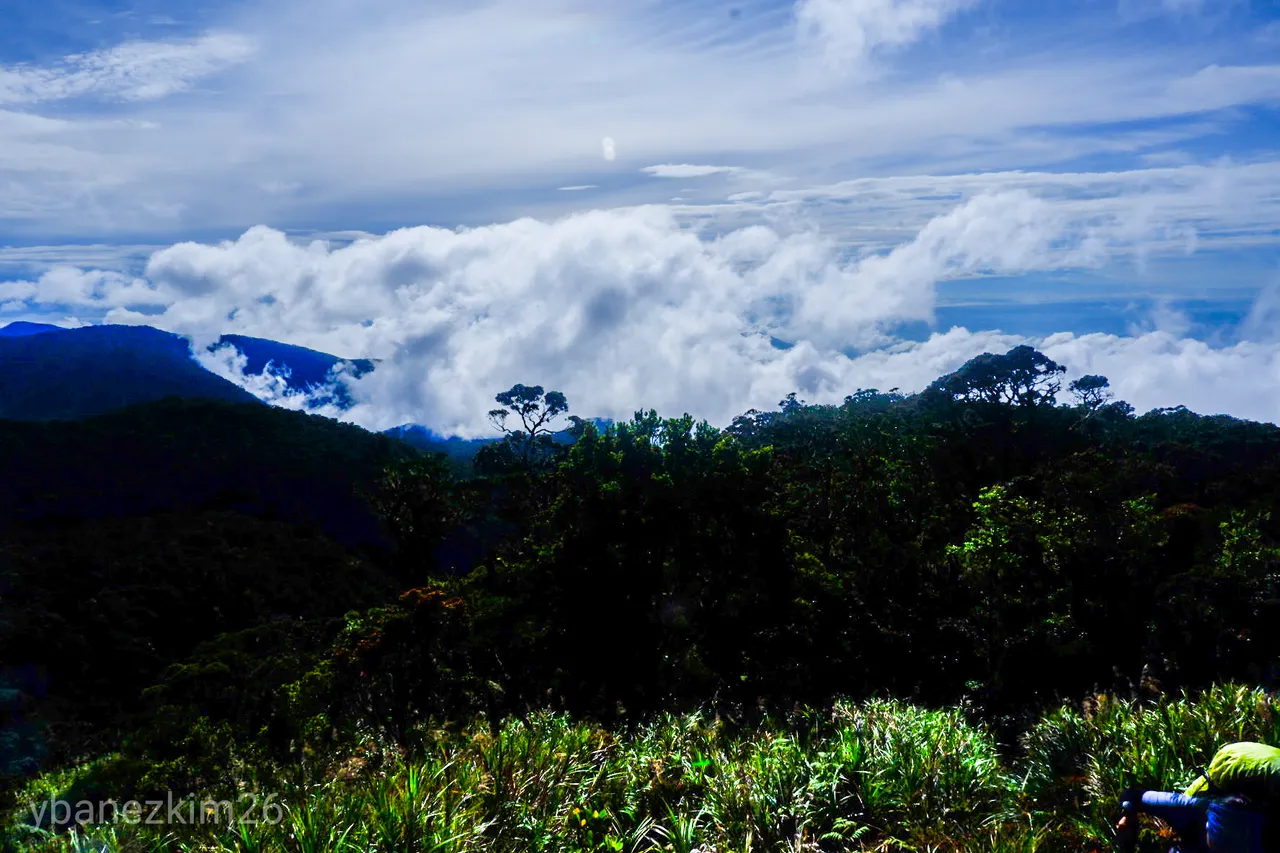
We departed from Muleta Falls at around 7:45 AM and continued with the trek up to scale the summit. The first goal was to reach Sako Camp an hour after. It was getting hotter because the sky was clear. We were so lucky because it didn't rain unlike the day before when we were going to the View Deck. I took out my wet jackets and have them hanged on my bag to dry them.
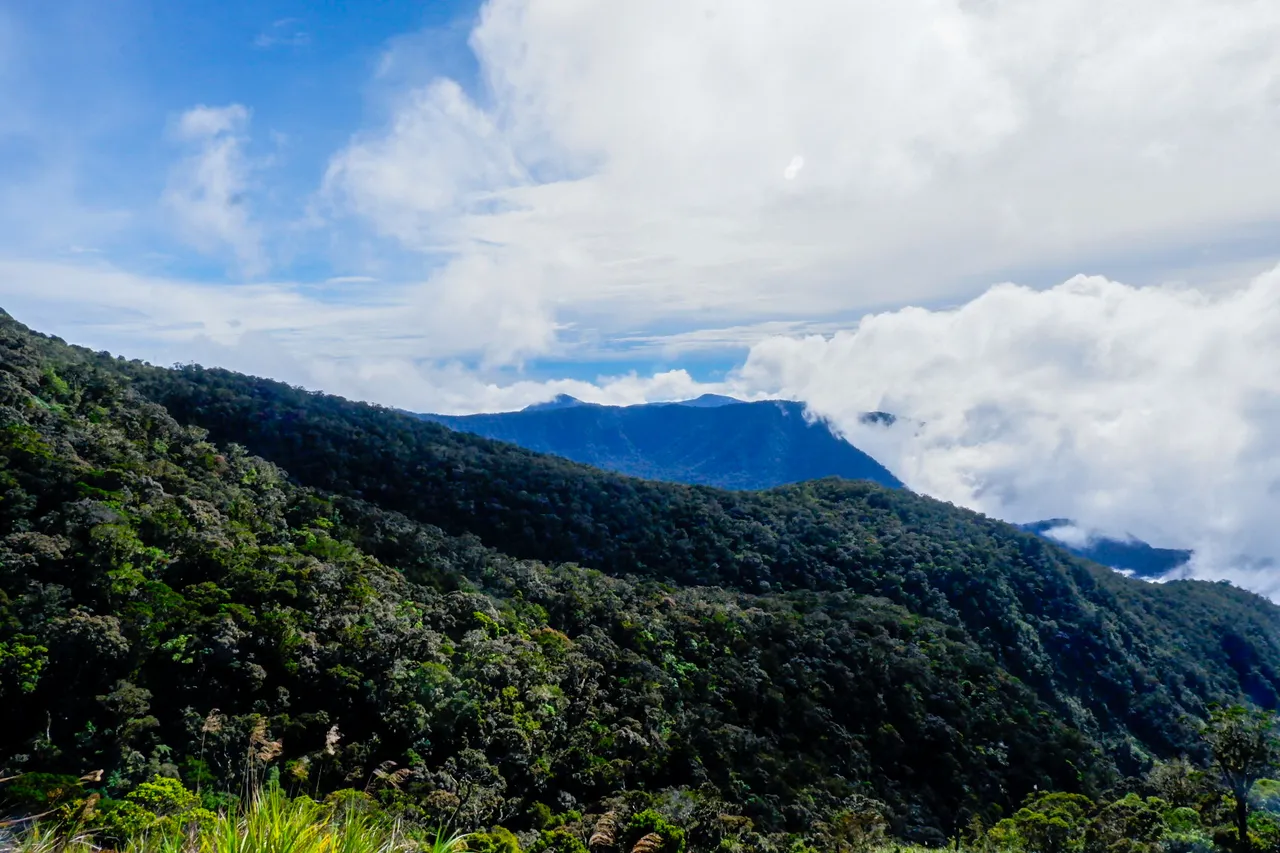
As we ascend higher, I began catching my breath again; maybe due to elevation or due to exhaustion and heat of the sun. The trail also became steeper and steeper. We were still in an open trail when the clouds started to form below us. It was a quick sea of clouds moment because it dissipated a few minutes after as they're carried upwards by the wind.

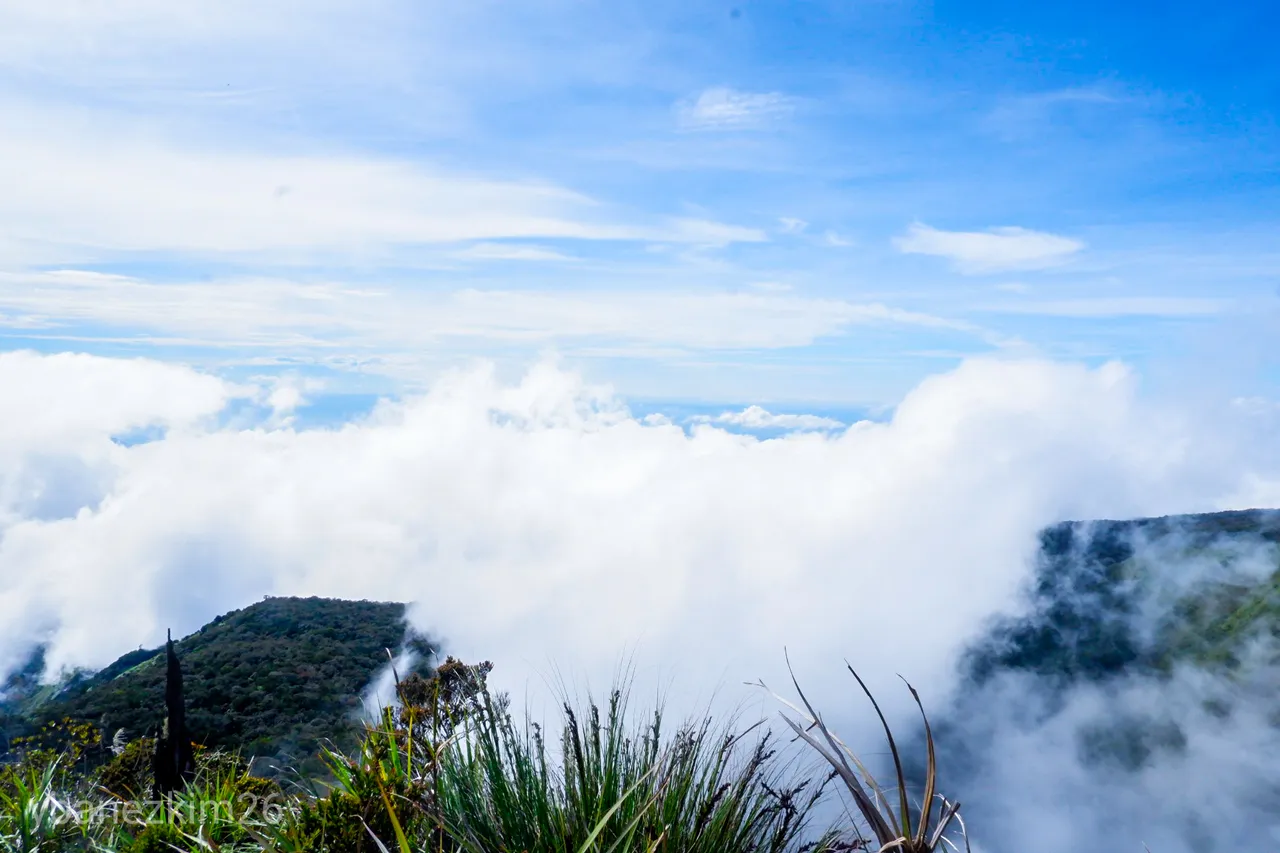
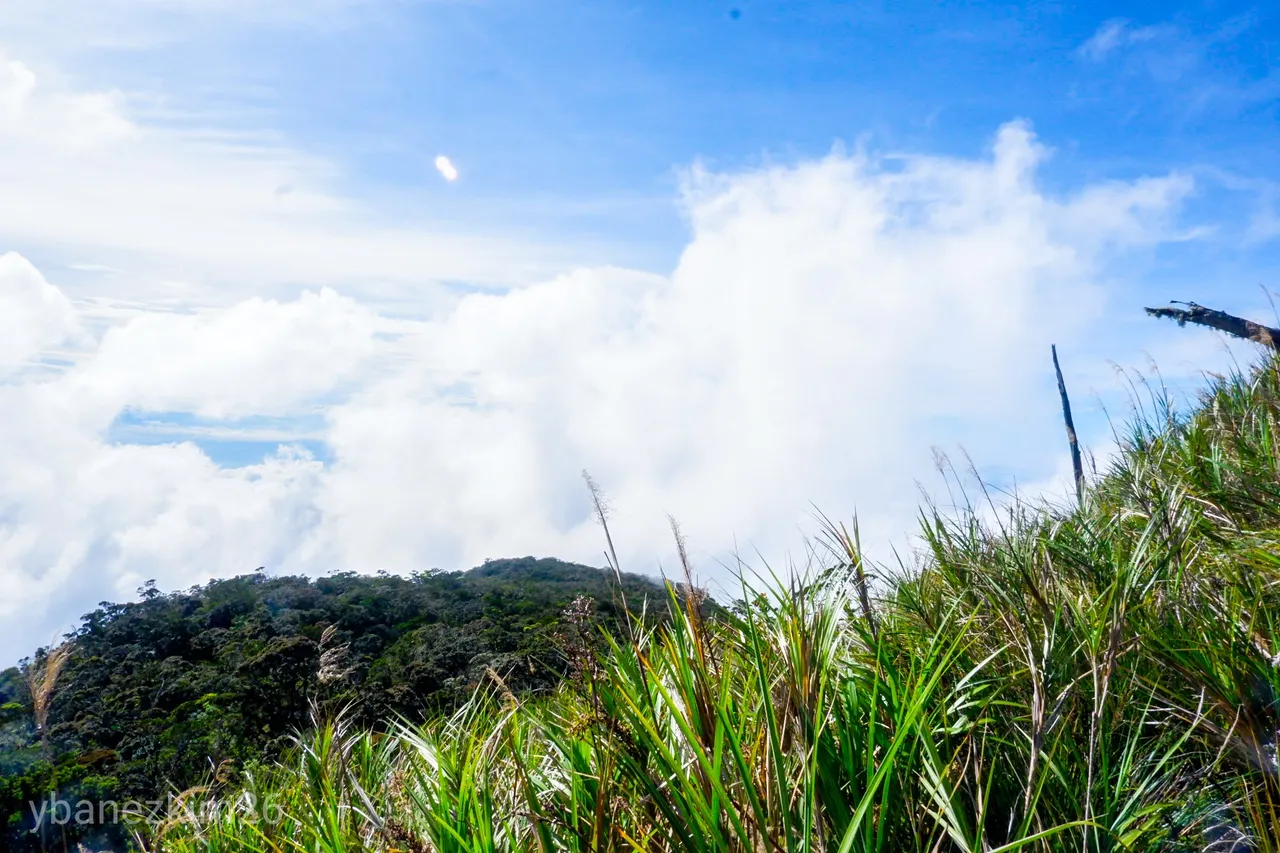
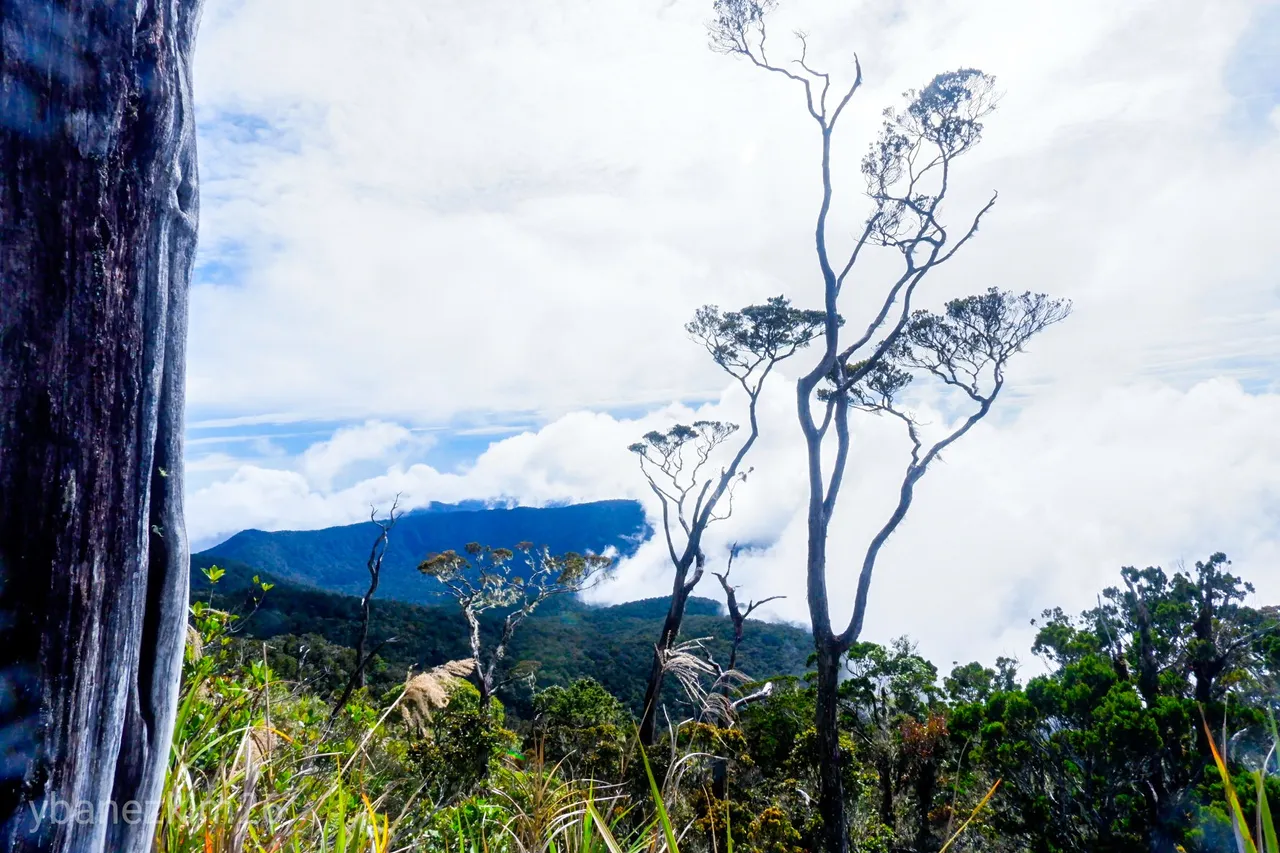
We entered a mossy forest and the guide said that Sako Camp is at the edge of that forest. I was relieved because I knew the mossy forest would provide cover from the sun. I started wearing my rain jacket because the cold became unbearable.
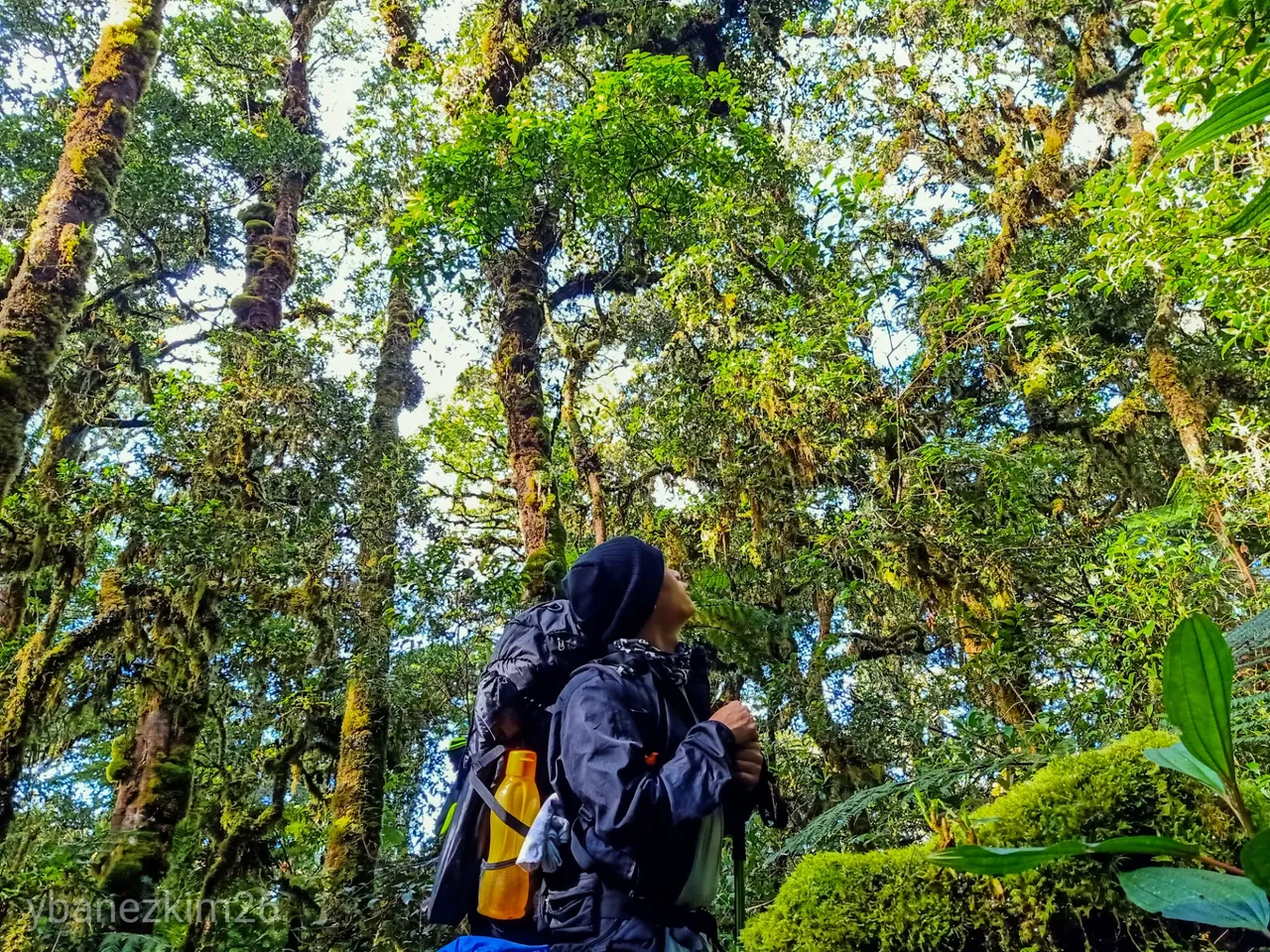
Being in the mossy forest was refreshing. The air seemed so pure that it has this certain "crispness" that I can't explain. It was very far from the normal air quality in the city. I loved being under the canopy of those arching ancient trees.
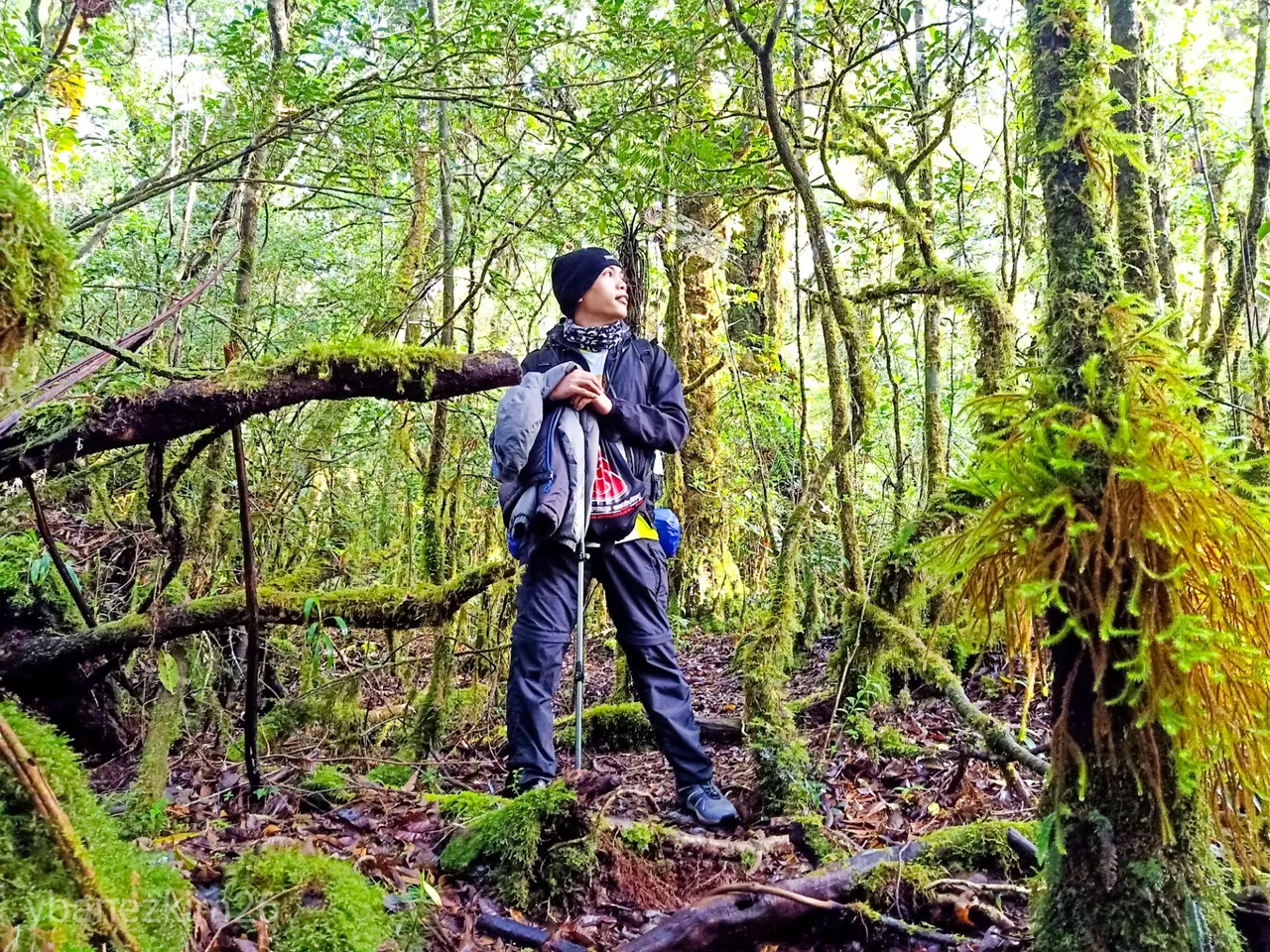
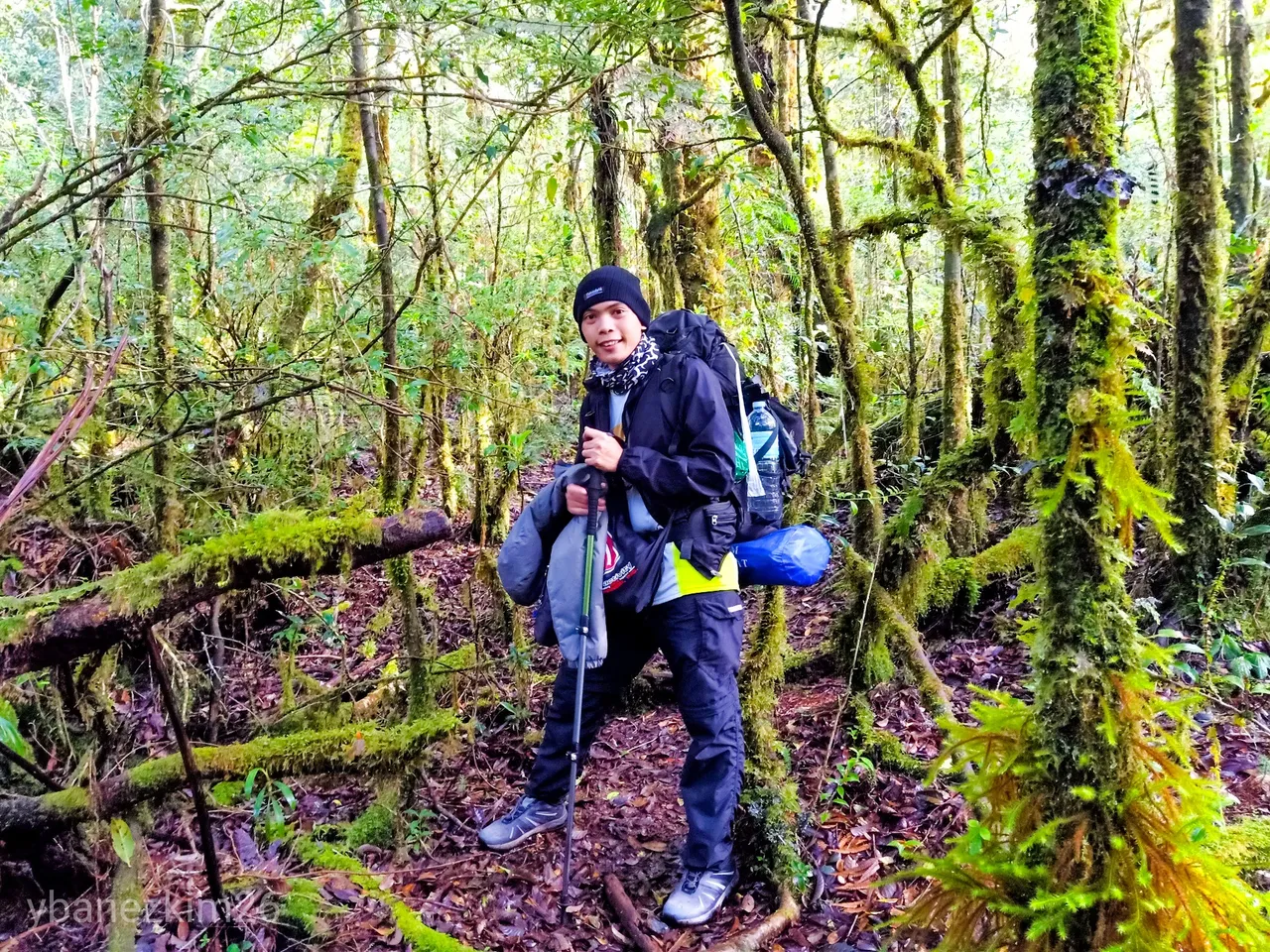
We arrived in Sako Camp at around 9:00 AM. We rested for about 5 minutes and then hit the trail again. At the edge of the mossy forest, another open trail was waiting for us, but it was shorter in distance than the first one.
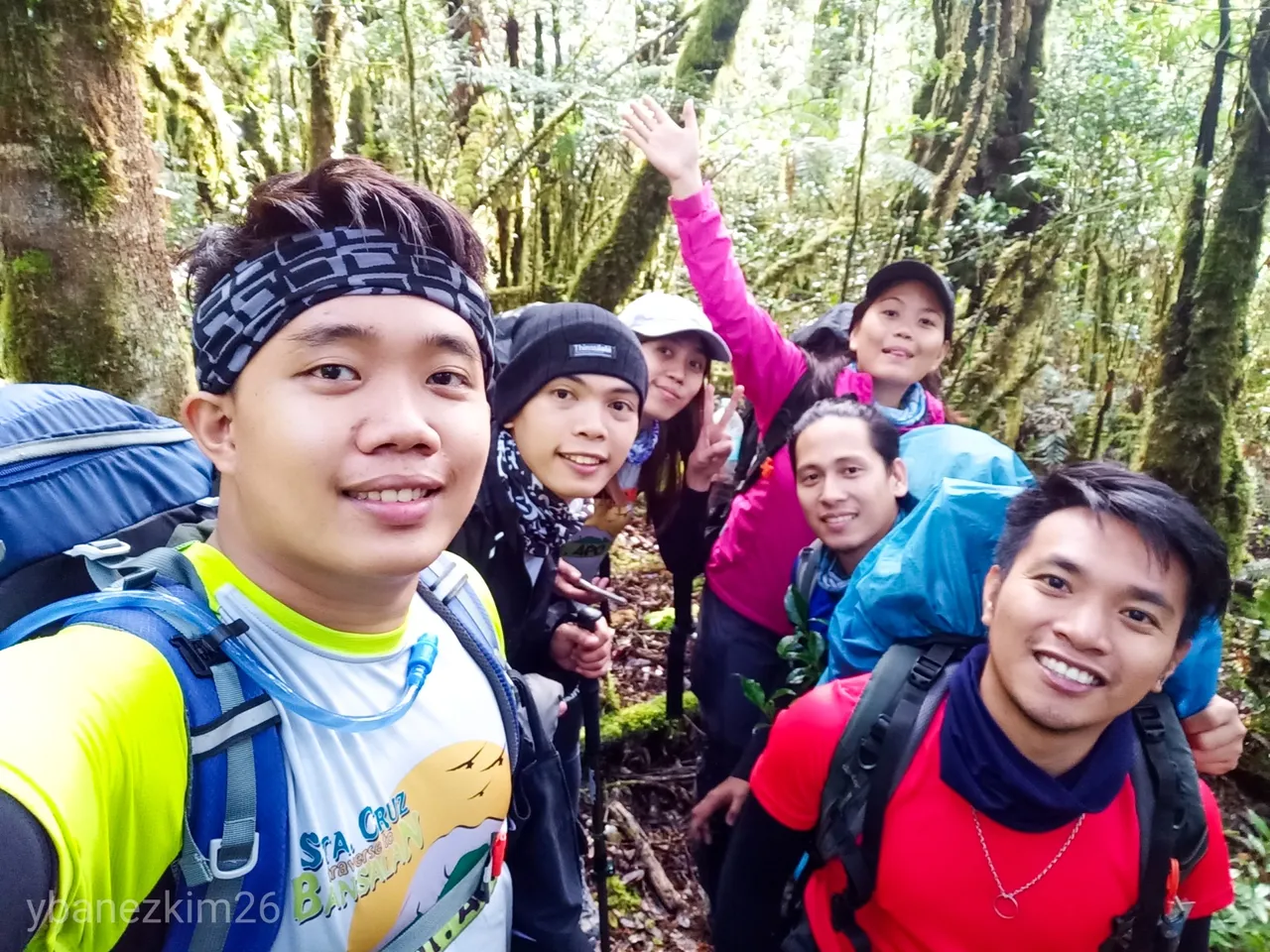
From Sako Camp to Junction was one of the longest in the trail. It took us around 1 hour and 30 minutes to reach the Junction. Good thing it was almost all forest. It was in between Sako Camp and the Junction that the team started to break. Those hardcore went ahead while I walked at my own pace. Zaniel was following behind me while the others were sweeping behind us. There were times when I couldn't find Zaniel so I just went ahead. My guide were the strips of red/orange cloth that were tied on the branches of the trees.
There was one time along the trail when I heard murmurs and whispers in the forest. I was not sure if they're from my team or I was just hearing things or it was something else entirely. But I didn't mind. I just focused on my breathing. My body wanted to surrender, but I have no choice but to move forward.
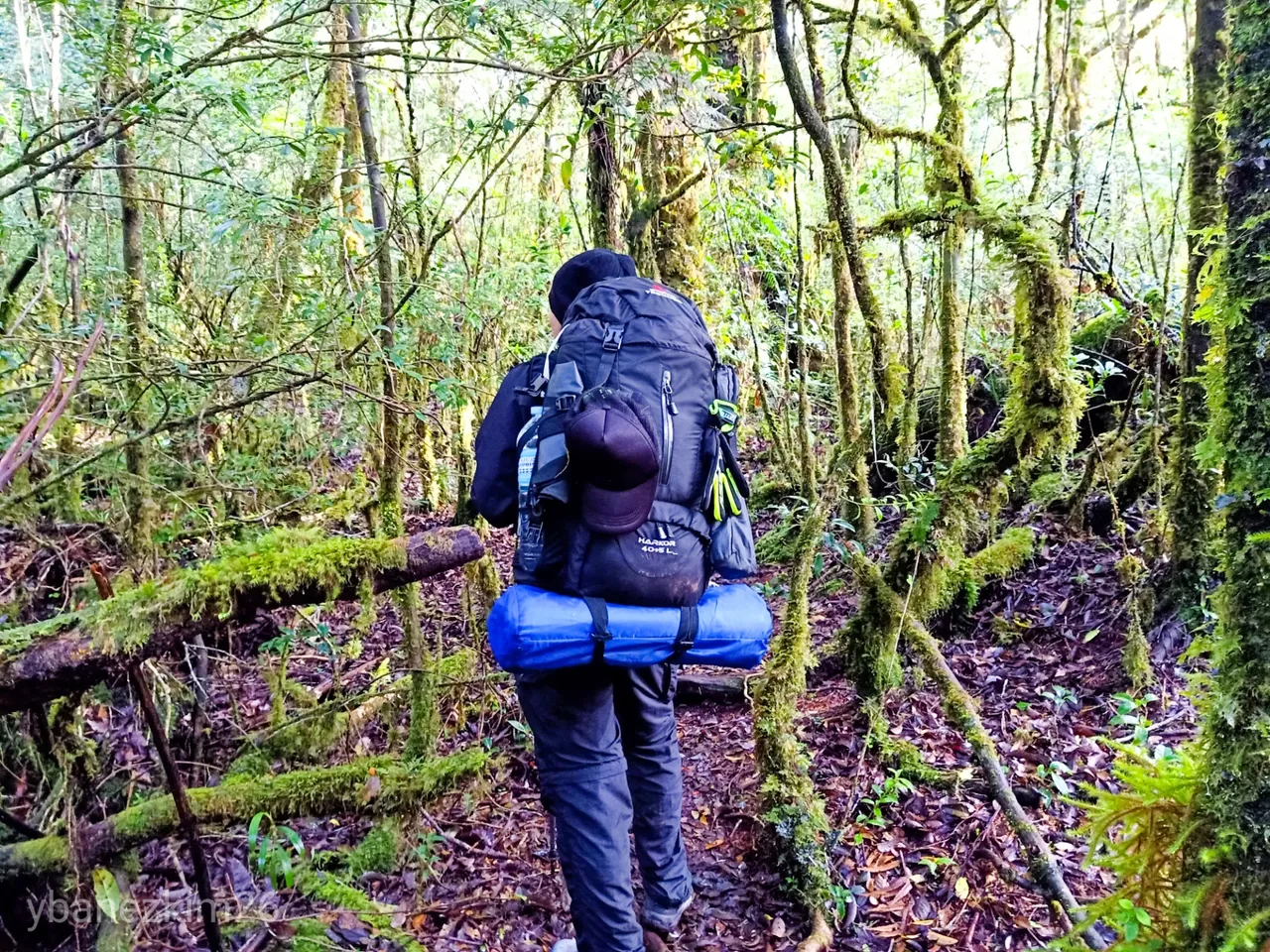
I finally reached the Junction. The trail is forked; one is a downhill trail to Bamboo Camp (Sanggaya Camp) while the other leads to the peak of Mt. Kalatungan. The lead (Sheila, Maria, and James) were already waiting for us. Zaniel and Ate Sherlyn followed a few minutes later. The six of us decided to scale the peak together. The sweepers (John, Junji, the other James, Jovy, Kevin, and CJ) were tailing behind. We just left our gears at the junction we would be getting them once we descend to Bamboo Camp.
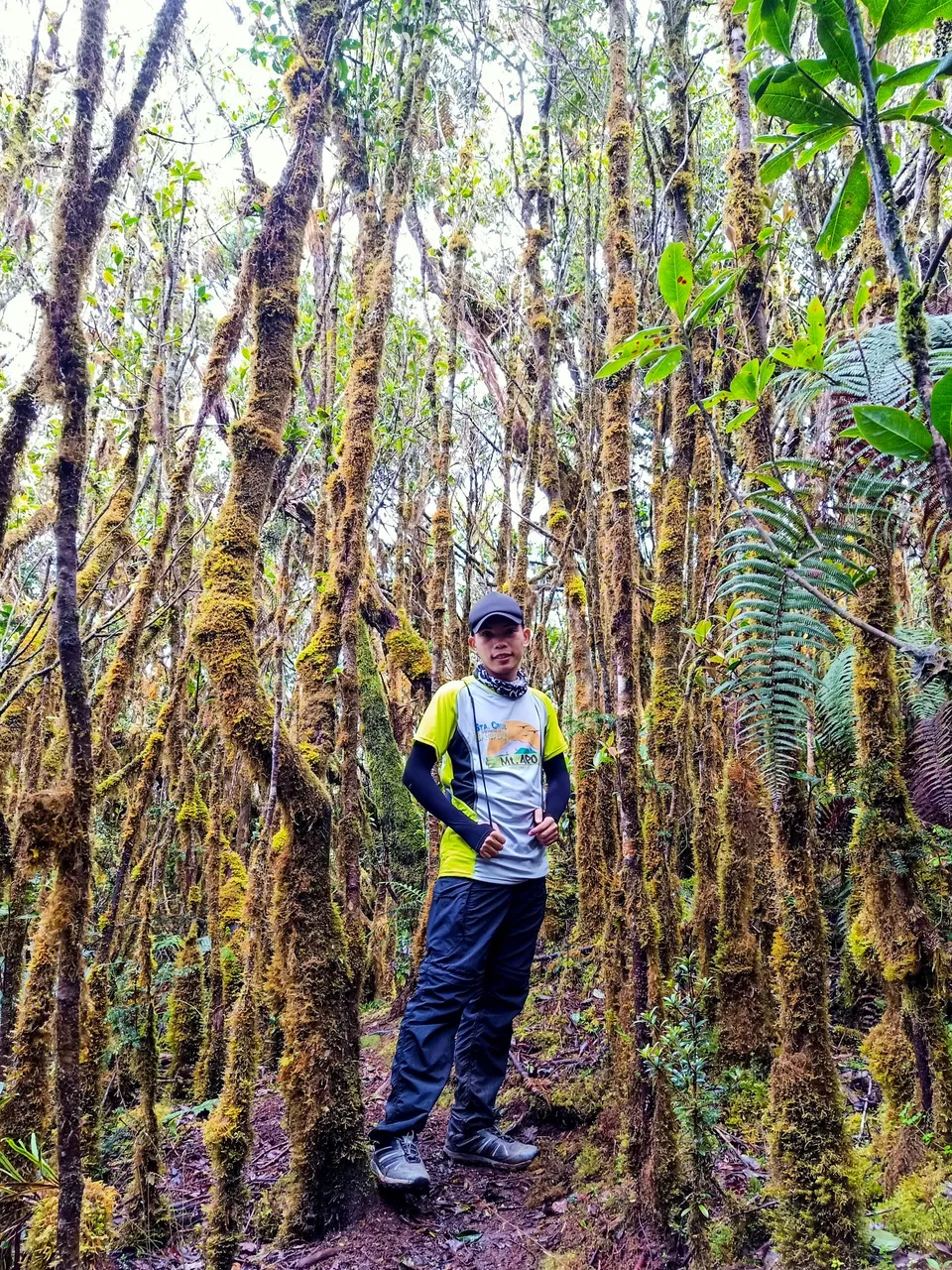
I enjoyed the trail on the way to the summit because I didn't have to carry a 14-kg load on my back. It was still a mossy forest at first and then an open trail. We stayed at little bit longer in the mossy forest to take a lot of photos that our guide whistled to signal that we should move on.
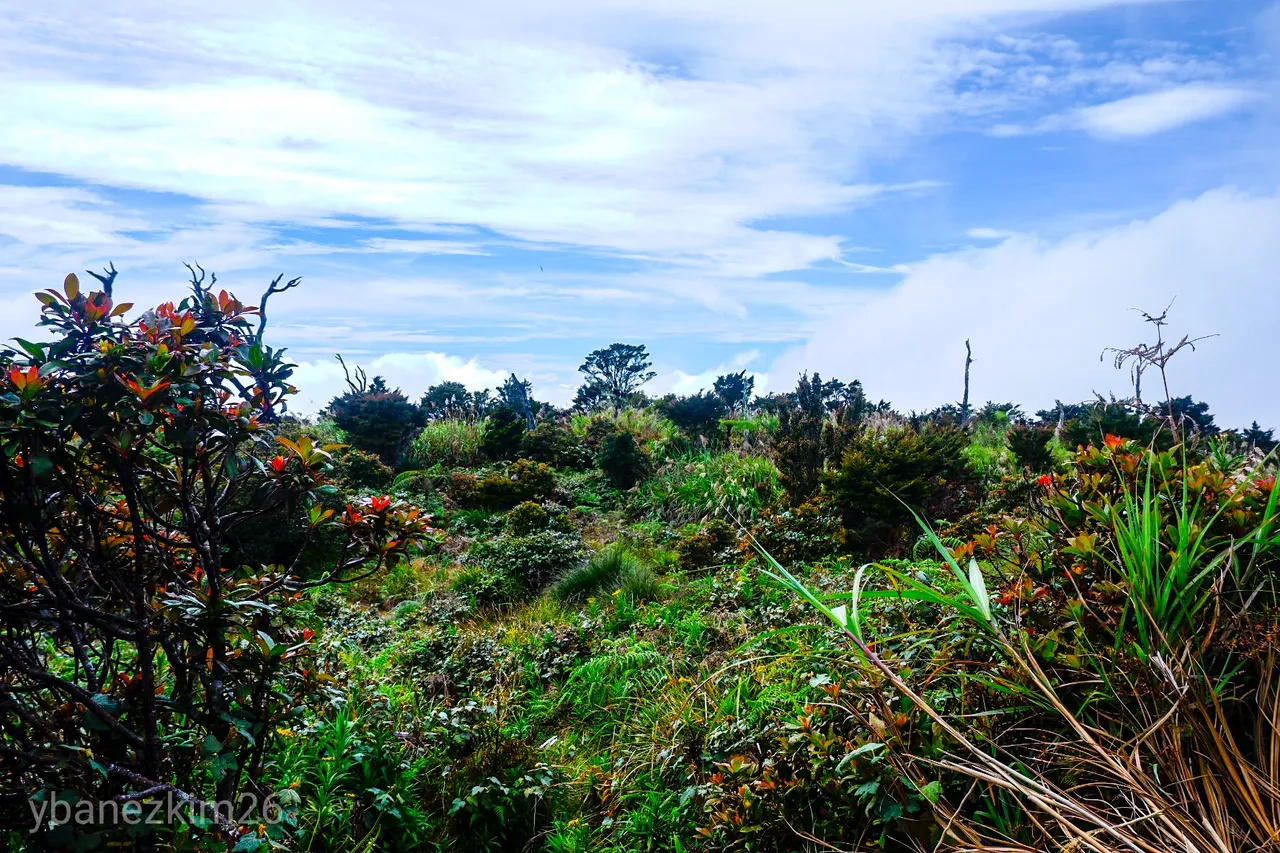
Summit, at last!
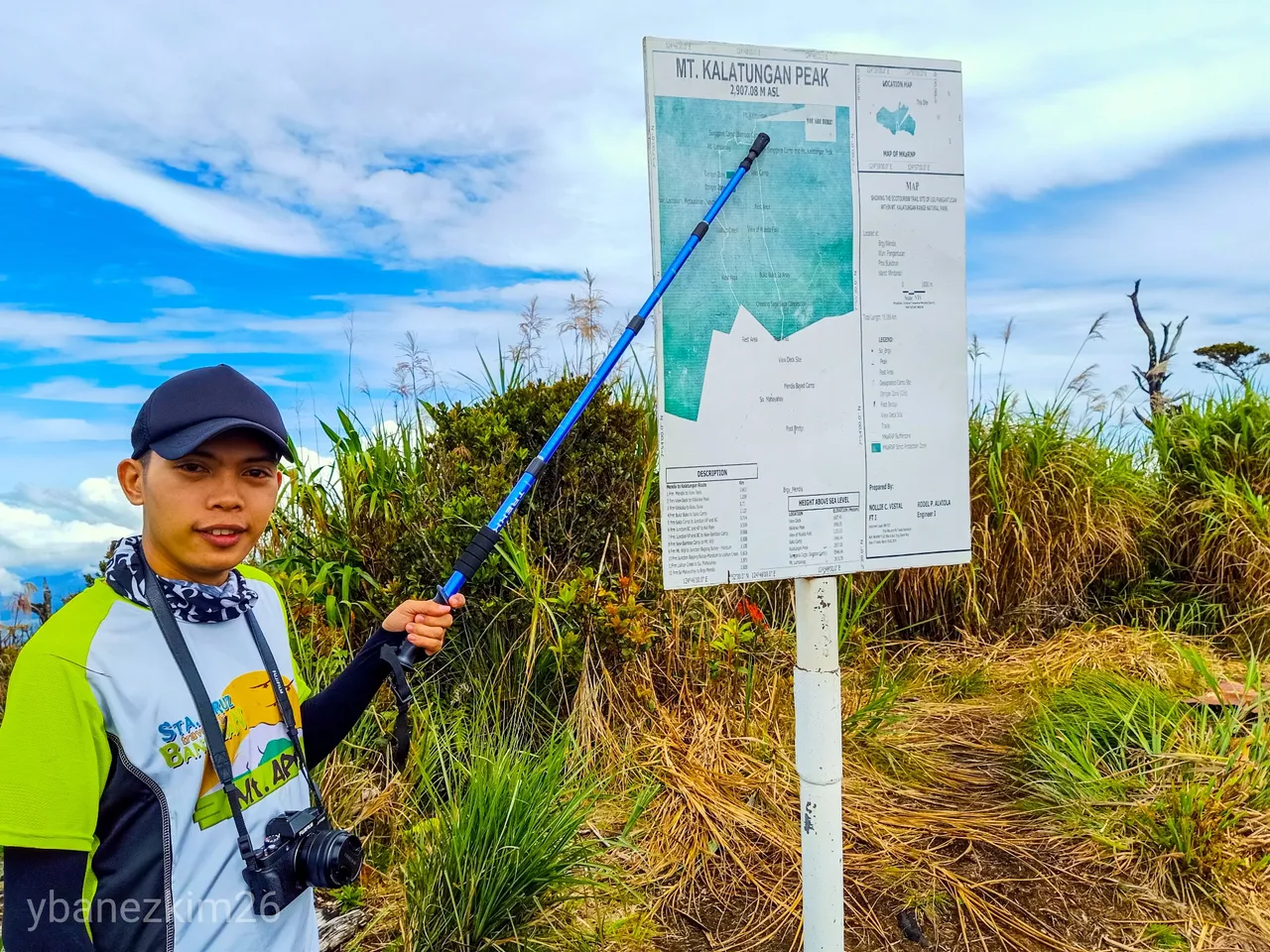
After almost 8 hours of walking, finally, we reached Mt. Kalatungan Peak which is at 2907 MASL (based on the signage, but some say it's just 2880+ MASL). The peak is a flat area with growing trees, shrubs, and ferns. Because there were clouds, Bukidnon was partially covered. Mt. Kalatungan is the main mountain of Mt. Kalatungan Mountain Range Natural Park. It is a mountain volcano that's potentially active, but has no history of eruption. Mt. Wiji and other lesser peaks can be seen adjacent to it.
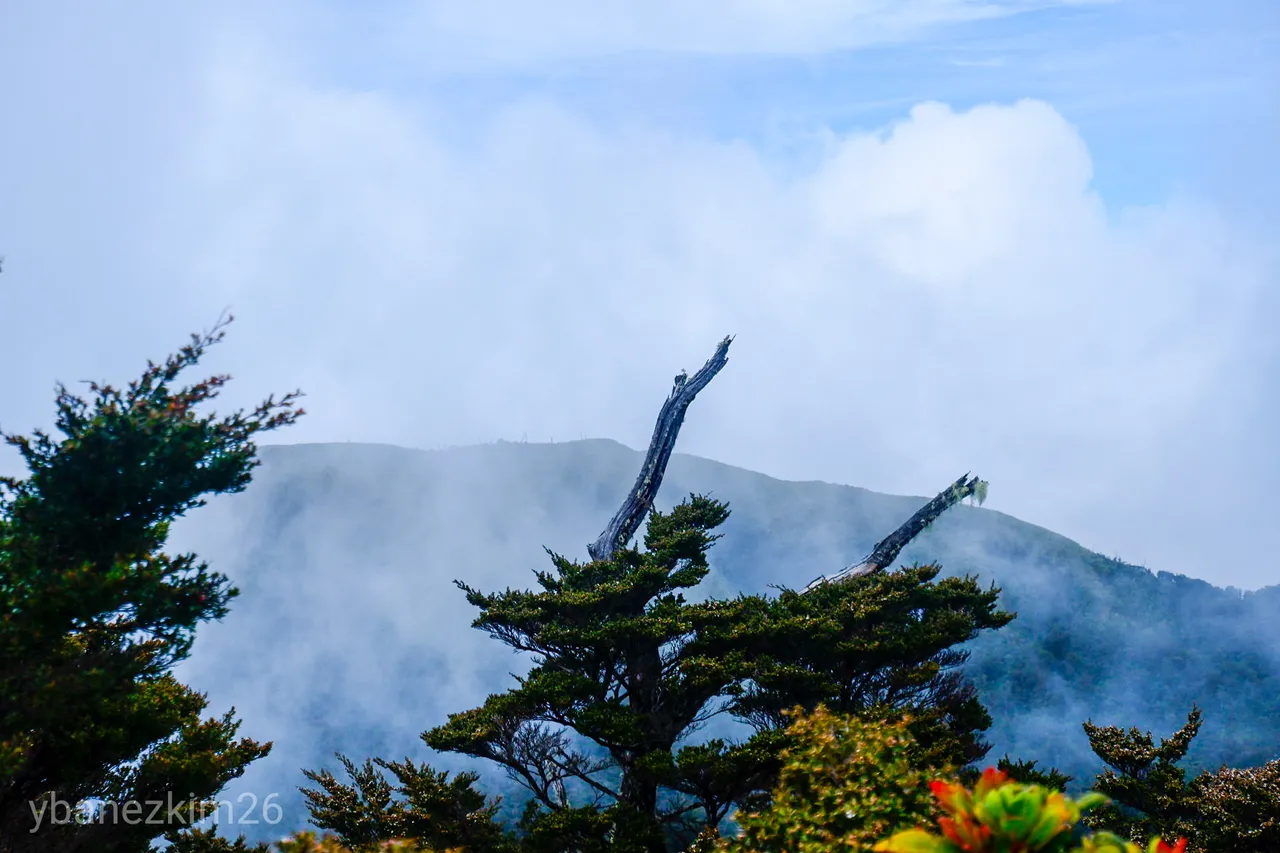
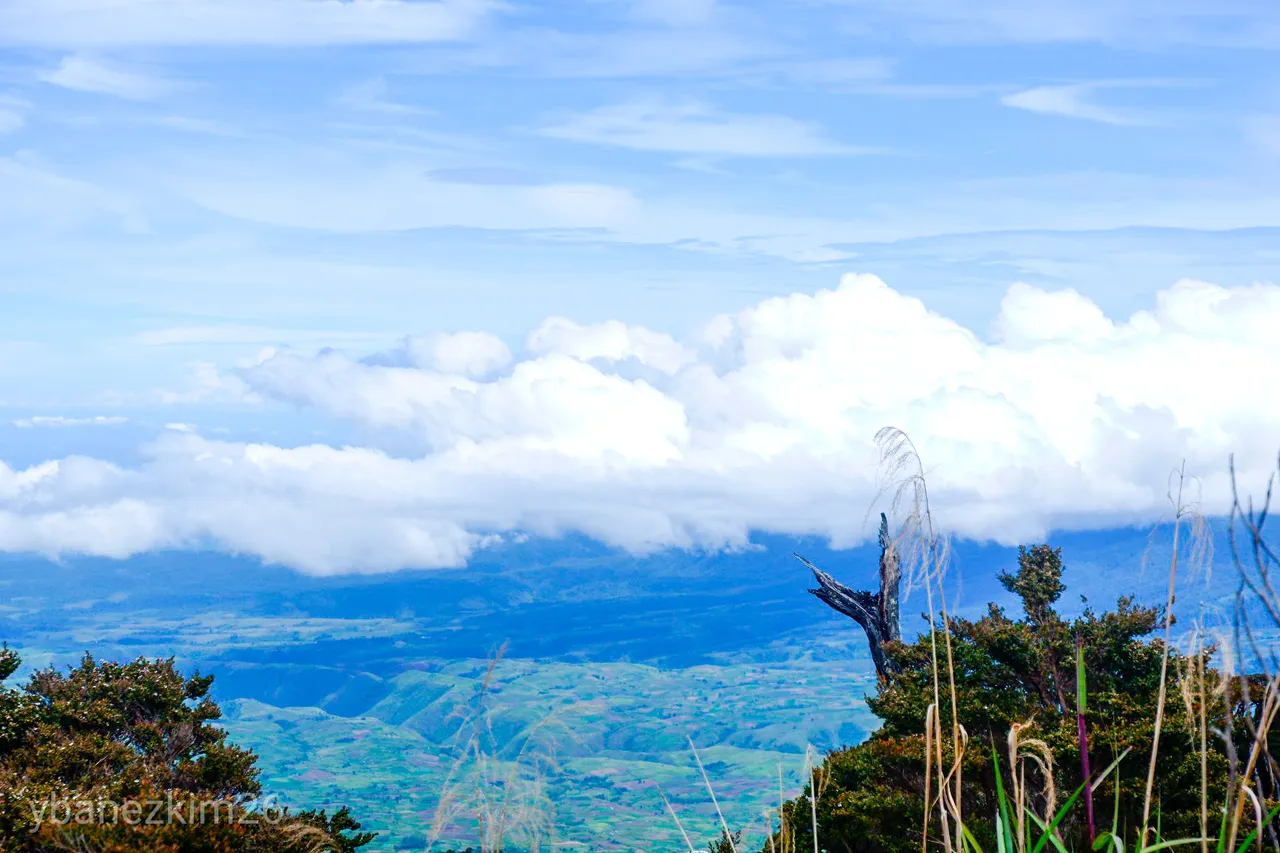
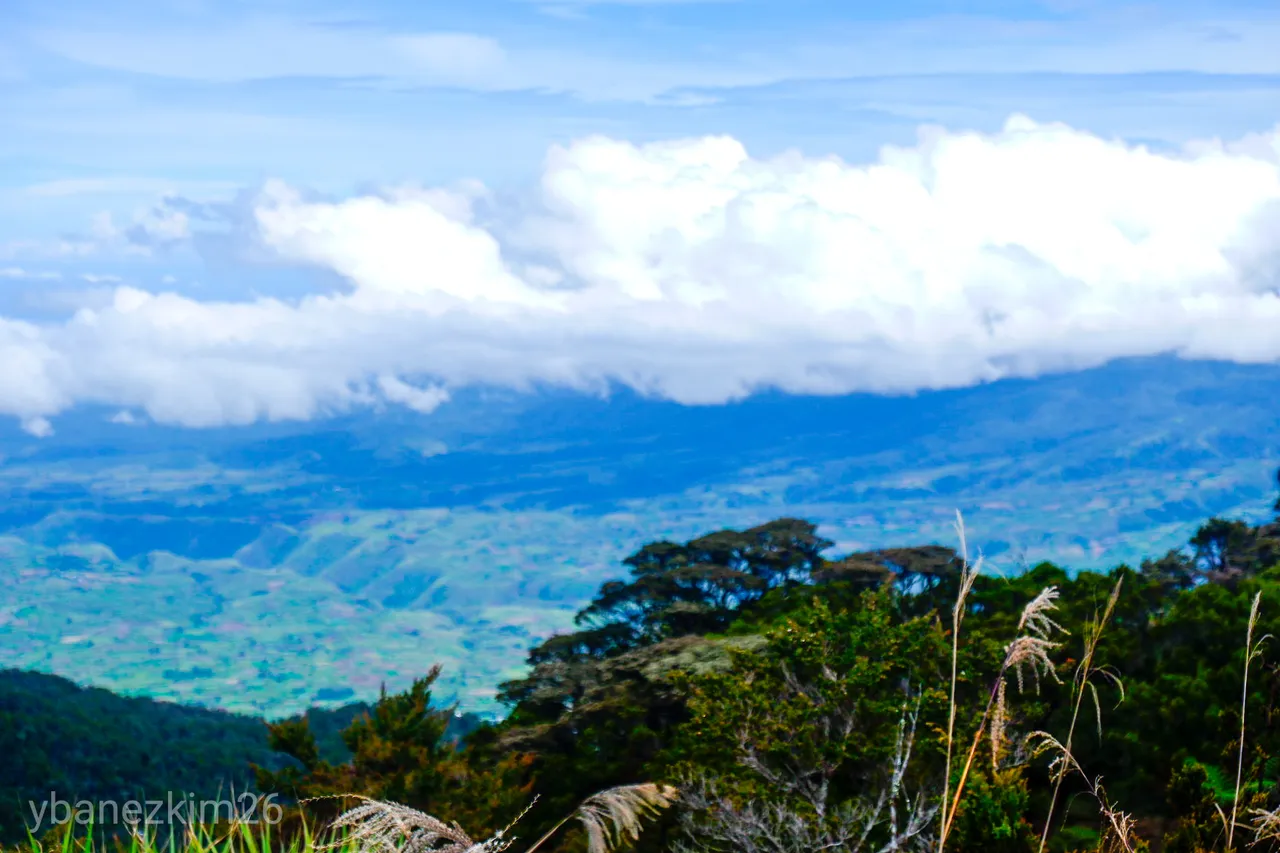
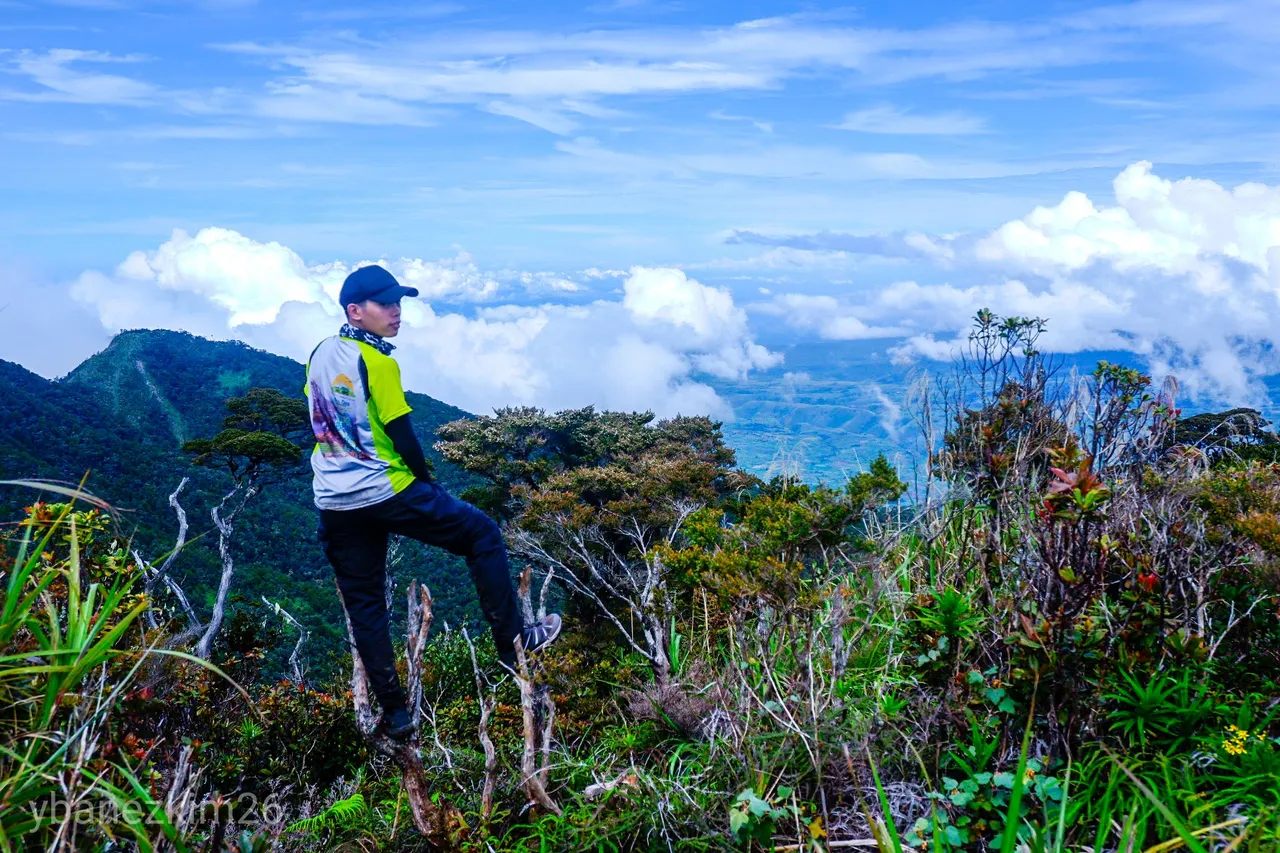
Of course, a photo op with the first batch of survivors was mandatory.
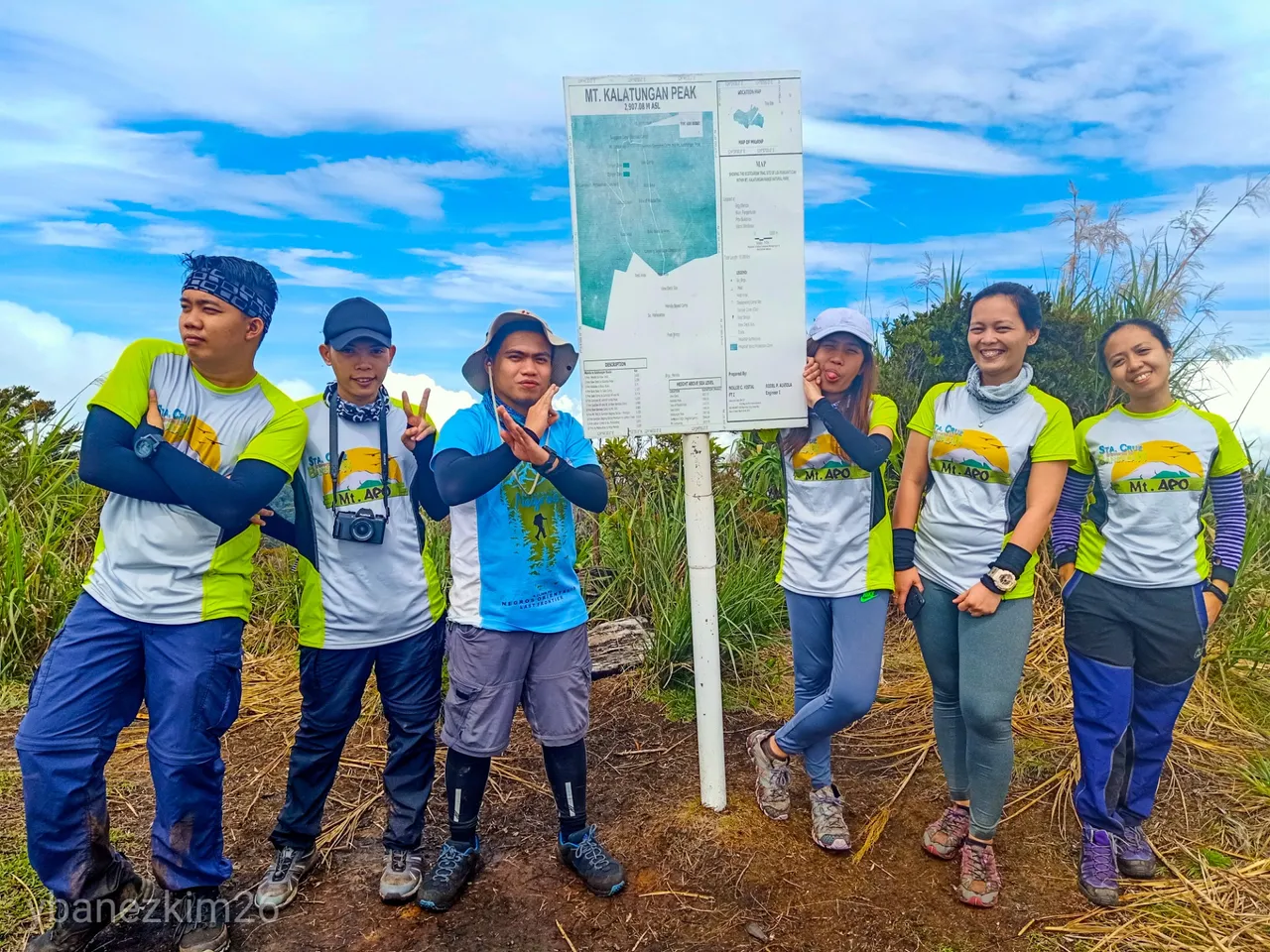
I can't believe I managed to scale my first major climb! It was certainly a surreal experience that it seemed all my pains were gone. I was all smiles while at the top.
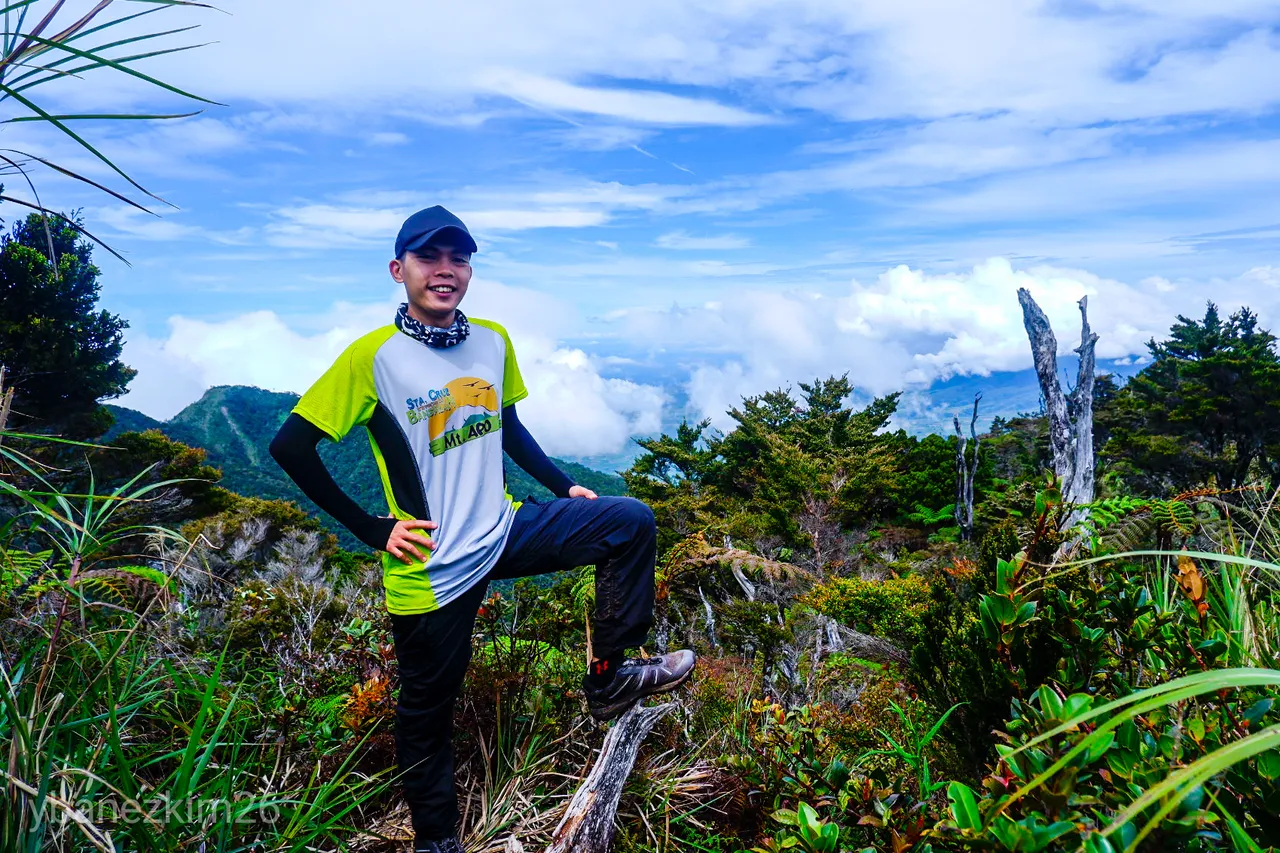
When the sweepers arrived, we decided to go back to the Junction. From the Junction, we descended to the valley where Sanggaya or Bamboo Camp was located. It was a gruelling downhill trek. The rain the night before added to the difficulty of the trek. It was muddy and the roots of the trees were very slippery. To add to the misery, uprooted trees were blocking the way so we had to duck or go over them.
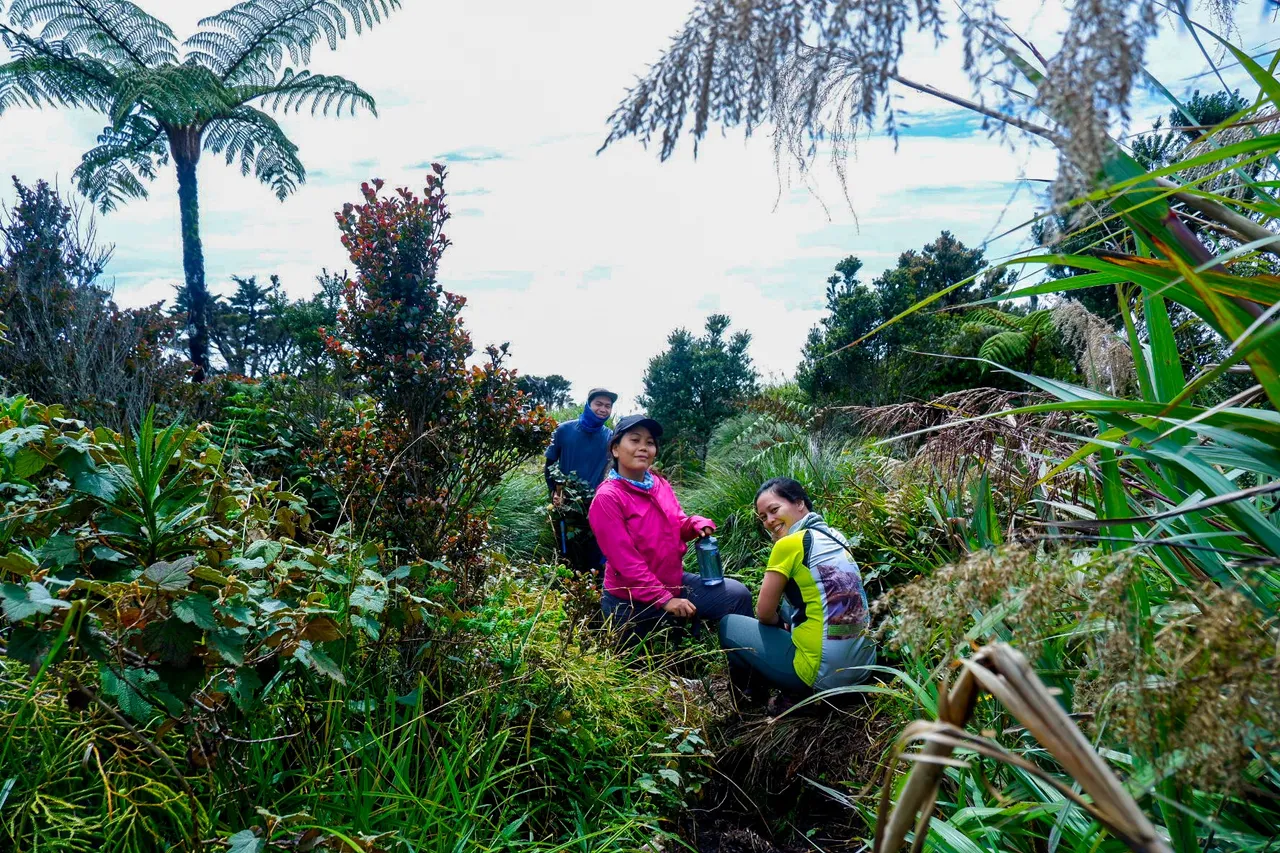
Arrived at the camp...
We arrived at Bamboo Camp at around 12:30 PM. After about 9 hours of walking, we can finally rest. We had our lunch which was already prepared by our guides as they descended to the camp ahead of us. After lunch, we had to pitch our tents to rest.
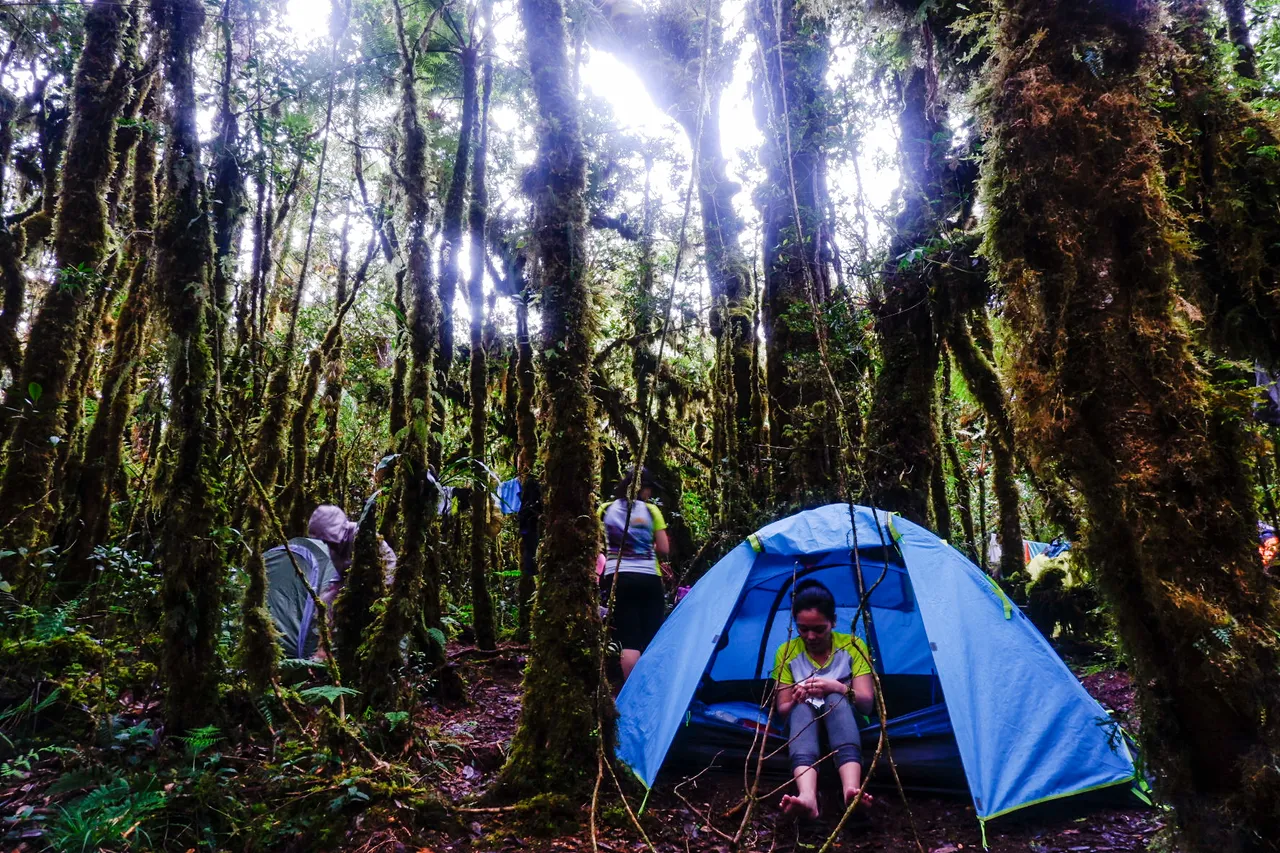
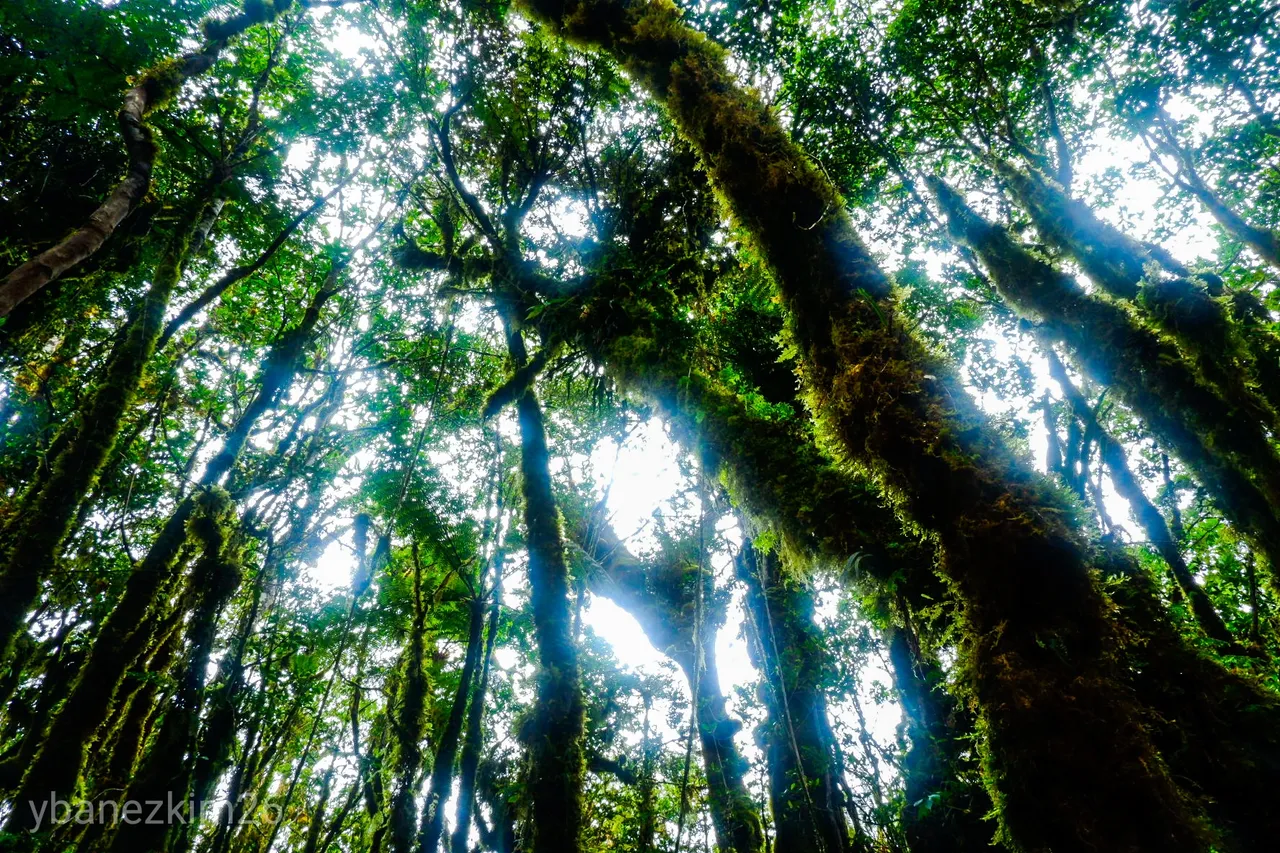
Bamboo Camp is still a mossy forest with towering trees. I think those trees were very old as they have a weird shape. The camp was called Bamboo due to the species of dwarf bamboo that grows in the area. They're in a certain spot along the clearing in that valley.
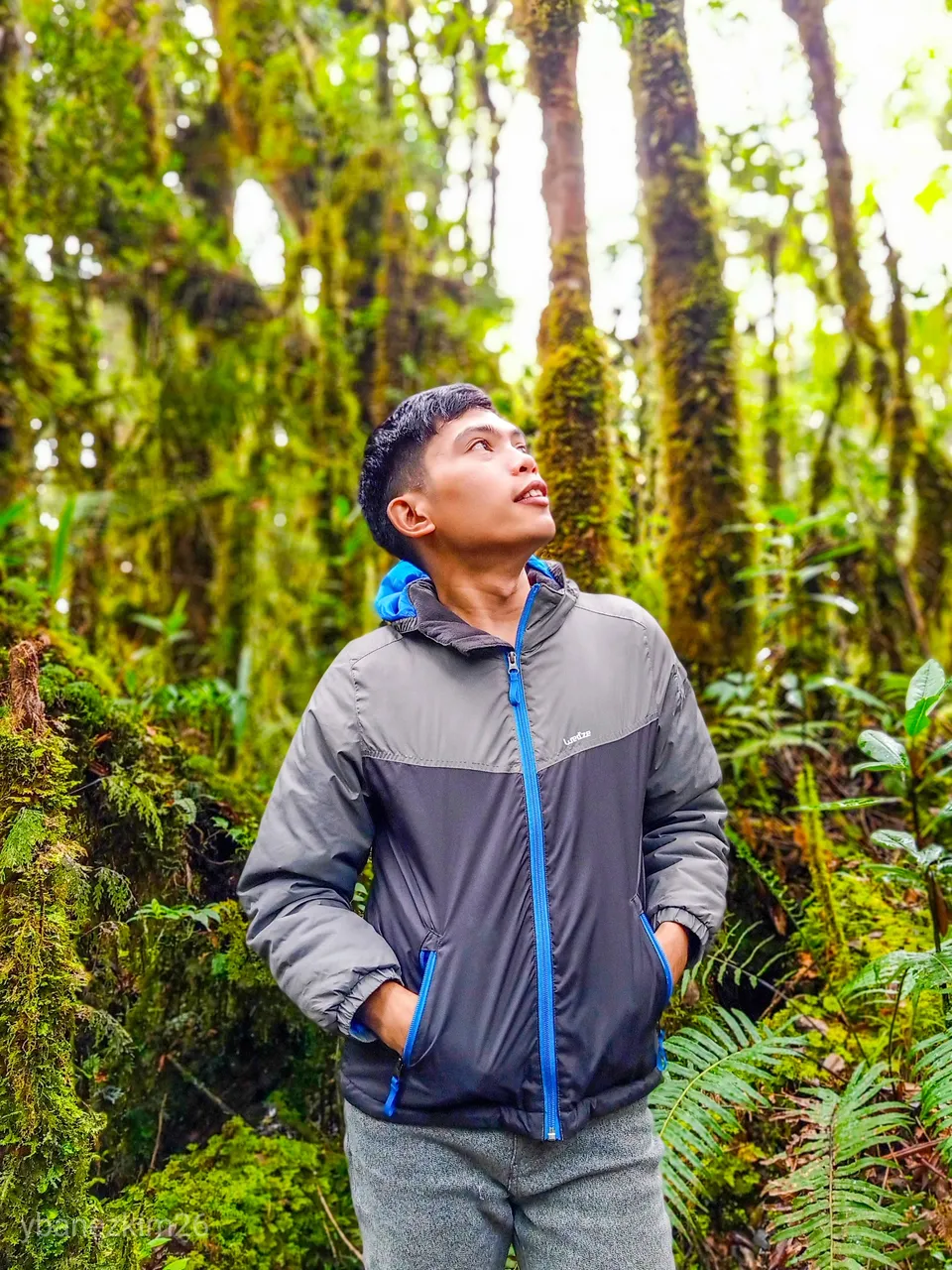
I think it was around 2:30 PM when I fell asleep. I was really tired that they just woke me up at around 6:30 PM to have dinner. After some slight socials, I slept at again around 9:30 PM knowing that another day of trek is waiting for me.
Stay tuned for the 4th part of this series. It will be about our ascent to Mt. Lumpanag or Mt. Wiji or Macaopao Peak.
[Note: All photos with focal length of 15.0~45.0 mm are taken from my Fujifilm X-T100 while those that has focal length of 4.73 mm are taken from Zaniel's OPPO F11 Pro.]
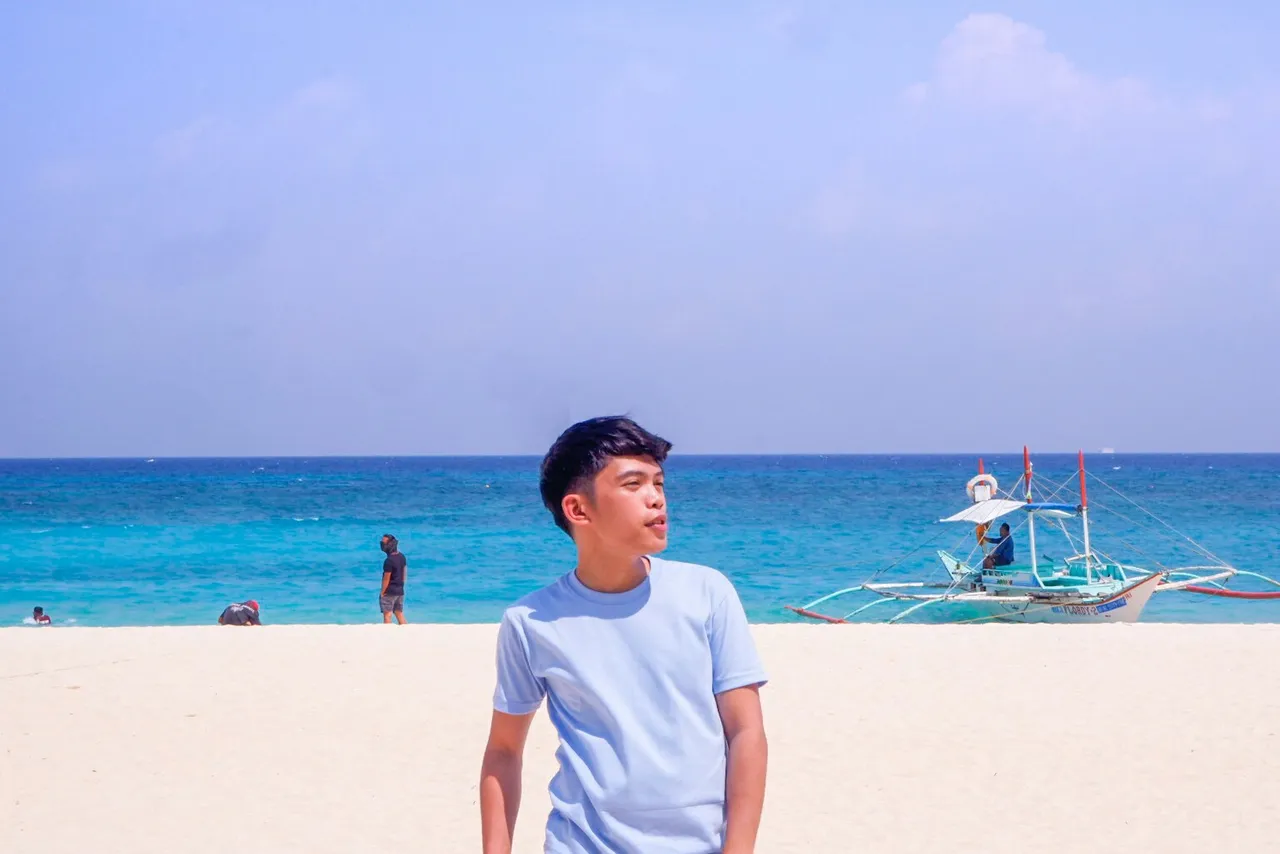
Kim Ybañez
Welcome to Kim's small corner in the Steem blockchain. He is a chemical engineer by profession, but a blogger by passion. He is a wanderlust and an adventure seeker. Join his quests as he visits secluded destinations, climbs mountains, tries new and exotic dishes, and explores his country (The Philippines) and the rest of the world (it will just follow since he's still a poor, corporate slave with tons of bills to pay and two siblings to support in college).
View this post on TravelFeed for the best experience.